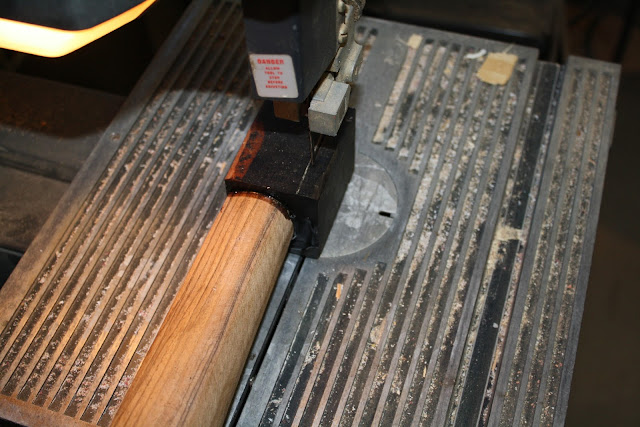I am going to show you a few examples of the detail cleanup work that is done on the stock. I don't have pictures of all the work that was done but this is an example of the cleanup in two areas.
Initial sanding and shaping of the stock has started. Most of the rough machine marks on the outside of the stock have been filed off and sanded smooth. Now I start the detail work.
Here is the ejection cutout after inletting. It is a nice clean fit but I like to dress this area up a little.
I first start by extending the radius on the sides further down the stock. I call this cutting in the fangs.
Then I file the area between them flat, this is a picture part way through the process.
Here is the completed cutout ready for final sanding. I think that this adds a nice touch. You can also see that the ebony cross bolts have been sanded down and cleaned up.
Then I turn my attention to other areas of the stock that need to be cleaned up. Here the top of the grip is getting cleaned up. This is the grip in the rough form.
Here I have started to contour the grip to a more pleasing contour.
Here is the grip finished ready for final sanding.
This process is completed in several other places of the stock but I don't have pictures of all of them.






















































